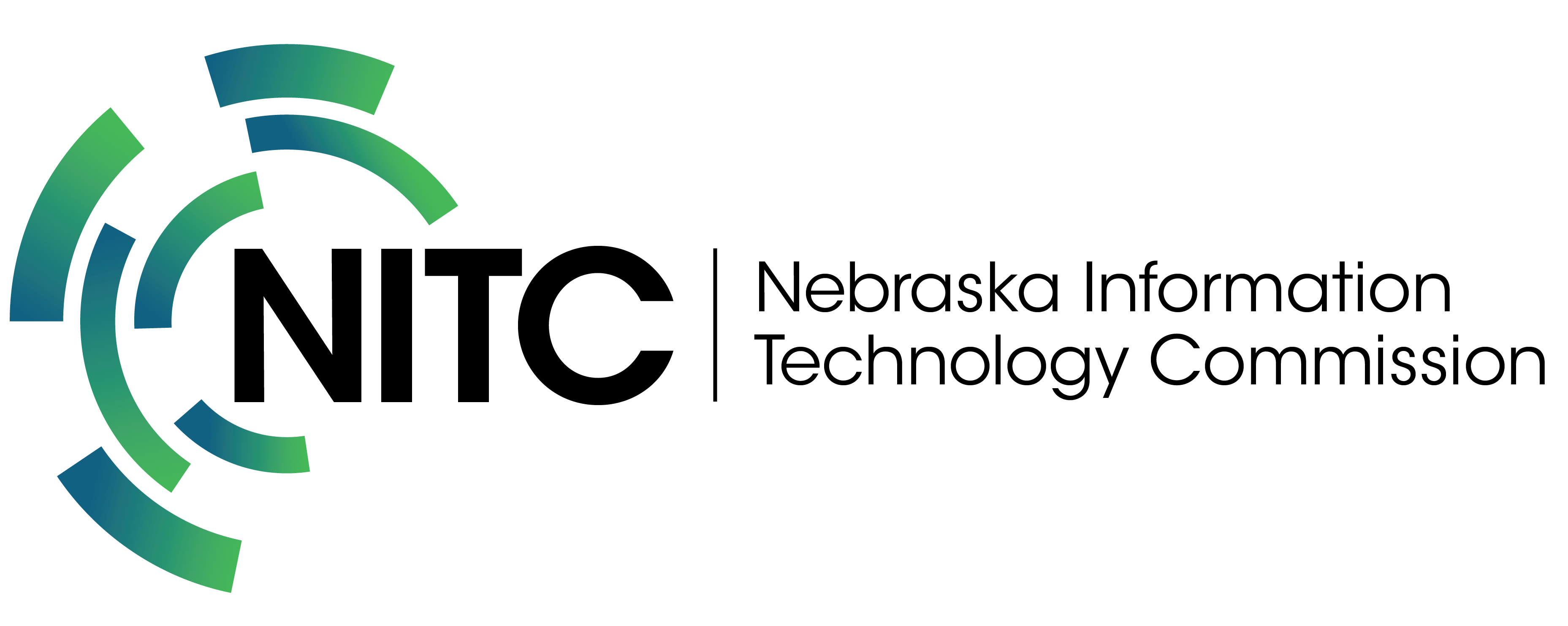Nebraska Geospatial Strategic Plan 2012
The Nebraska Geospatial Strategic Plan was approved by the Nebraska GIS Council October 3, 2012. It represents the culmination of a yearlong planning effort. This planning effort involved extensive outreach to and input from Nebraska's diverse geospatial stakeholder community which included members of local, county, state and federal governments, academia, the private sector and Natural Resource Districts. Outreach included:
- Over 440 responses to a survey on current uses and maturity of geospatial activity
- Direct participation by 149 people in stakeholder workshops conducted throughout the state in February, 2012
These outreach efforts helped to characterize the existing conditions of geospatial activity in Nebraska and also identified two central challenges:
1. In spite of a large and active geospatial stakeholder community there have been significant communication gaps, a lack of awareness of the GIS Council and a misunderstanding of state government's interests.
2. In spite of well intentioned planning efforts dating from 2007, there has been inadequate progress in building a Nebraska Spatial Data Infrastructure and making those data available to both public and private sector stakeholders.
To address these issues the planning process identified an overarching vision for geospatial development in Nebraska:
To foster an environment that optimizes the efficient use of geospatial technology, data, and services to address a wide variety of business and governmental challenges within the state. Geospatial technologies will be delivered in a way that supports policy and decision making at all levels of government to enhance the economy, safety, environment and quality of life for Nebraskans.
In order to move forward to realizing this vision the plan four strategic goals that will advance geospatial development, coordination and collaboration in Nebraska.
1. Facilitate the creation, maintenance, analysis, and publishing of quality geospatial data. In order to help ensure that geospatial stakeholders have reliable and current data and that they know how to obtain it.
2. Provide widespread access to data and services and encourage data sharing. In order to ensure that government data is readily available through mechanisms such as the NebraskMAP (see image to the right) and to help the government harvest a larger return on its data creation investments.
3. Facilitate technical assistance and education outreach opportunities for furthering the adoption of Nebraska Spatial Data Infrastructure (NESDI) data layers and geospatial applications. In order to continue to build awareness of geospatial activity and technology and to lower the barriers to entry for smaller actors who have not yet been able to gain access to geospatial technology.
4. Achieve sustainable and efficient allocation of resources to support the implementation and wise governance of GIS services and geospatial data. In order to ensure that geospatial technology is adequately supported and that communal costs are equitably shared by all those who benefit.
It is understood that achieving these goals will require significant organizational and institutional changes that will take place incrementally and over time. The next step in the process will be the development of three companion Geospatial Business Plan that will support the implementation of the Strategic Plan. The Business Plan will include a detailed business case that documents the benefits resulting from a collaborative statewide approach to geospatial initiatives and it will also provide an implementation plan for achieving long-term efficiency and stability.
This Strategic Plan is the result of hard work from the GIS Council, the Strategic Planning Steering Committee and the State GIS Coordinator, as well as the strong, direct contributions of the broad geospatial stakeholder community. Achieving the vision set out in this plan will result in greater cooperation, collaboration and communication among all stakeholders, leading to greater geospatial productivity, less redundancy, and more informed policy across all disciplines and business lines.
Resources
- Strategic Plan Full Report (PDF) Executive Summary (PDF)
- GIS/Geospatial Workshop Presentation (PDF)
- FGDC Proposal and Resources (PDF)
The strategic planning effort has been initiated through the NITC GIS Council Strategic Planning Committee. Resources to support the planning process has been made possible through a cooperative grant effort called the Fifty States Initiative implemented between the Federal Geographic Data Committee (FGDC) and the National States Geographic Information Council (NSGIC). Through this grant, Applied Geographics, Inc. has been awarded the contract to facilitate the strategic planning and reporting process.

